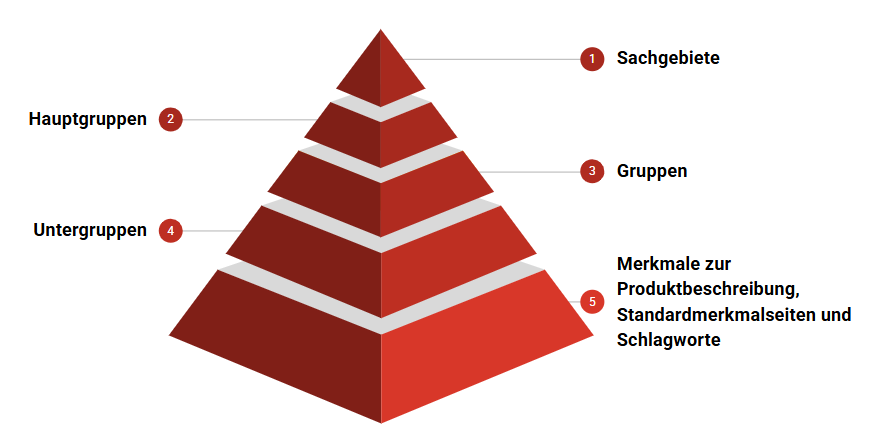ECLASS
ECLASS is an internationally recognized standard classification system used for the uniform and structured classification of products and services. The ECLASS system was developed to facilitate interoperability between companies, industries, and systems and to establish a common language for the exchange of product information.
More on ECLASS
Why is ECLASS used?
The main features and goals of ECLASS include:
-
Structured classification:
ECLASS provides a hierarchical structure with various categories, classes, and attributes, allowing for systematic categorization and description of products and services. -
International standard:
ECLASS is an internationally recognized standard used in various countries and industries. It enhances collaboration between companies and ensures interoperability between systems. -
Interoperability:
ECLASS facilitates the exchange of product information between companies, platforms, and systems by providing a shared classification language. -
Adaptability:
ECLASS is highly flexible and can be tailored to the specific needs of different industries and use cases. It offers industry-specific profiles and variants developed for particular sectors. -
Support for various data formats:
ECLASS is compatible with various data formats, including XML, CSV, and other structured formats, ensuring seamless integration into existing IT systems.
ECLASS is used across a wide range of industries and applications, including manufacturing, commerce, e-commerce, logistics, construction, and more. It serves as a vital foundation for efficient management, classification, and description of products and services in global supply chains and business processes.
Using ECLASS effectively
ECLASS enables the creation of a uniform, digital language for products and services. This allows companies to exchange information efficiently across industry and organizational boundaries, significantly improving data quality and optimizing business processes such as procurement and product launches. In addition, ECLASS promotes interoperability between systems and partners and forms a key foundation for digitalization initiatives.
prodexa PIM offers an ideal solution to fully leverage the benefits of ECLASS. The system provides extensive support for ECLASS, allowing users to manage both the simple ECLASS Basic structures and the more complex technical models of ECLASS Advanced. This enables standardized data management where ECLASS attributes are maintained directly within the PIM. This reduces errors and ensures consistency. prodexa PIM also offers powerful import and export functions for ECLASS-based data, simplifying and accelerating communication with suppliers and customers. By avoiding manual conversions, media breaks are eliminated, and product information flows seamlessly into all relevant channels. prodexa PIM makes ECLASS practical and empowers businesses to make the most of their product data and gain a competitive edge.
ECLASS in detail
ECLASS is based on a four-level hierarchy of classification classes organized as a tree structure. The first level contains the most general categories, while the fourth level represents the most specific classifications. There is an inheritance relationship between levels, allowing for hierarchies based on technical, commercial, or other criteria. The class hierarchy is represented by an 8-digit code, where each pair of digits represents a hierarchy level.
ECLASS Classification Tree

-
Segments: The top level defining broad product categories (e.g., Electrical Engineering, Construction Components, Services).
-
Main groups: A subdivision of the segment (e.g., within Electrical Engineering: Lighting, Cables, Switches).
-
Groups: Further division of main groups (e.g., within Lighting: LED lights, Halogen lamps).
-
Subgroups: The most specific level, defining a distinct set of products with similar features (e.g., LED ceiling lights).
Each product class is assigned specific attributes used to describe the product in detail. These attributes are standardized and have defined data types, units, and value ranges.